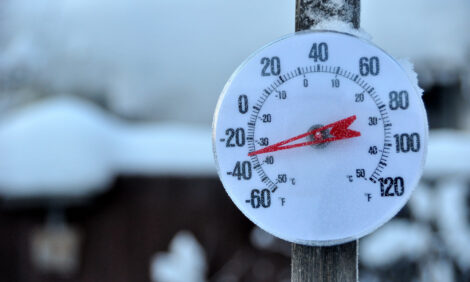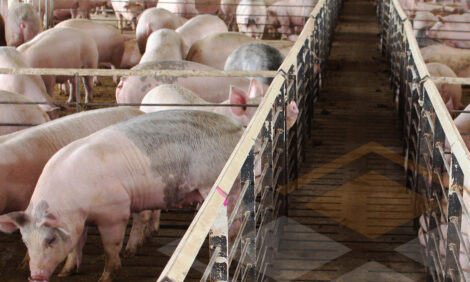



Identification of Factors Linked to Age at First Farrowing
Selection of gilts based on a few selected characteristics would increase the proportion of gilts that farrow and reduce age at first farrowing, according to researchers from North Carolina State University and Newsham Choice Genetics.The phenotypic and genetic correlations between gilt oestrus, puberty, growth, composition and structural conformation traits were studied in realtion to first litter reproductive measures by M.T. Knauer of North Carolina State University and co-authors there and at Newsham Choice Genetics at West Des Moines, Iowa. The paper is soon to be published in Journal of Animal Science.
The objective was to estimate correlations of gilt oestrus, puberty, growth, composition, and structural conformation traits with first litter reproductive measures.
Four groups of gilts (1,225, Genetic Improvement Services of NC) entered the NC Swine Evaluation Station averaging 162 days of age and were observed daily for symptoms of oestrus. Once symptoms of first estrus were observed in 70 per cent of gilts, recording of oestrus symptoms in all gilts occurred every 12 hours for 30 days by using fence-line boar contact.
Subjective oestrus traits were maximum and total strength of standing reflex as observed both with and without the presence of a boar and strength of vulva reddening and swelling. Objective oestrus traits consisted of vulva redness, vulva width, length of oestrus and age at puberty.
Growth and composition traits included puberty weight, days to 114kg, 10th rib backfat and LM area at 114kg and at puberty. Subjective structural conformation traits were muscle mass, rib width, front leg side view, rear leg side view, front legs front view, rear legs rear view, and locomotion.
First litter sow traits included if a gilt farrowed (STAY), age at first farrowing (AFF), total number born (TNB) and weaning-to-conception interval (WCI).
Variance components were estimated using an animal model with AIREMLF90 for linear traits and THRGIBBS1F90 for categorical traits. Heritability estimates for STAY, AFF and TNB were 0.14, 0.22 and 0.02, respectively. Genetic correlations between length of oestrus, the standing reflex traits and age at puberty with STAY were 0.34, 0.34 to 0.74 and -0.27, respectively, and with AFF were -0.11, -0.04 to -0.41 and 0.76, respectively.
Days to 114kg had genetic associations with STAY, AFF, and TNB of 0.52, -0.25 and -0.08, respectively. Backfat at 114kg had genetic correlations with STAY, AFF and TNB of -0.29, 0.14, and 0.47, respectively.
Vulva redness and TNB were negatively correlated phenotypically (r = -0.14) and genetically (r = -0.53).
Associations between structural conformation traits with STAY, AFF, TNB, and WCI were generally low to moderate and favourable.
Selection for longer length of oestrus, stronger standing reflex, or younger age at puberty would increase the proportion of gilts that farrow and reduce age at first farrowing, concluded Knauer and co-authors.
Reference
Knauer M.T., J.P. Cassady, D.W. Newcom and M.T. See. 2011. Phenotypic and genetic correlations between gilt estrus, puberty, growth, composition, and structural conformation traits with first litter reproductive measures. J Anim Sci [E-pub ahead of publication]. jas.2009-2673v1-20092673.
Further Reading
| - | You can view the full report (fee payable) by clicking here. |
February 2011






